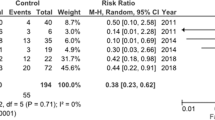Abstract
Strategies aimed at the lowering of blood ammonia remain the treament of choice in portal-systemic encephalopathy (PSE). L-ornithine-L-aspartate (OA) has recently been shown to be effective in the prevention of ammonia-precipitated coma in humans with PSE. These findings prompted the study of mechanisms of the protective effect of OA in portacaval-shunted rats in which reversible coma was precipitated by ammonium acetate administration (3.85 mmol/kg i.p.). OA infusions (300 mg/kg/h, i.v) offered complete protection in 12/12 animals compared to 0/12 saline-infused controls. This protective effect was accompanied by significant reductions of blood ammonia, concomitant increases of urea production and significant increases in blood and cerebrospinal fluid (CSF) glutamate and glutamine. Increased CSF concentrations of leucine and alanine also accompanied the protective effect of OA. These findings demonstrate the therapeutic efficacy of OA in the prevention of ammonia-precipitated coma in portacaval-shunted rats and suggest that this protective effect is both peripherally-mediated (increased urea and glutamine synthesis) and centrally-mediated (increased glutamine synthesis).
Similar content being viewed by others
REFERENCES
Bender A.S., and Norenberg, M.D. (1996). Effects of ammonia on L-glutamate uptake in cultured astrocytes. Neurochem. Res. 21:567–573.
Butterworth R.F. and Giguere J.F. (1984). Region-selective glutamine changes in the CNS in relation to function in experimental subacute hepatic encephalopathy. In (Kleinberger P., Ferenci P., Riederer P. and Thaler H., eds)Advances in Hepatic Encephalopathy and Urea Cycle Disease. pp 394–401.
Butterworth R.F., Giguere J.F., Michaud J., Lavoie J. and Pomier Layrargues G. (1987). Ammonia: Key factor in the pathogenesis of hepatic encephalopathy. Neurochem Pathol. 6:1–12.
Butterworth, R.F., Girard, G. and Giguere J.F. (1988). Regional differences in the capacity for ammonia removal by brain following portacaval anastomosis. J. Neurochem. 51:486–490.
Butterworth R.F. (1994). Hepatic encephalopathy. In (Arias I.M., Boyer J.L., Fausto N., Jakoby W.B., Schachter D.A. and Shafritz D.A., eds) The liver: Biology and Pathobiology, 3rd Ed., Raven Press, Ltd, New York, pp. 1193–1208.
Butterworth R.F. (1996). The neurobiology of Hepatic Encephalopathy. In (A.T. Blei and R.F. Butterworth, eds.) Seminars in Liver Disease 16, pp. 281–290.
Conn, H.O. and Eriksson, L.S. (1989). Nutritional therapy of portal-systemic encephalopathy: The branched-chain amino acid story. In (R.F. Butterworth and G. Pomier Layrargues, eds.) Hepatic Encephalopathy: Pathophysiology and Treatment, Humana Press, Clifton, N.J., p. 509–528, 1989.
Dienst S.G. (1961). An ion exchange method for plasma ammonia concentration. J. Lab. Clin. Med. 58(suppl 71):1–144.
Eck N.V. (1877). Ligature of the portal vein. Voen Med J St-Petersburg (Russo) 130:1–2. Translation by Child C.G. (1953) Surgery, Gynecology and Obstetrics, 375–376.
Girard G. and Butterworth R.F. (1992). Effect of portacaval anastomosis on glutamine synthetase activities in liver, brain and skeletal muscle. Digest. Dis. Sci. 37:1121–1126
Hindfelt B., Plum, F. and Duffy, T.E. (1977). Effect of acute ammonia intoxication on cerebral metabolism in rats with portacaval shunts. J. Clin. Invest. 59:386–396.
Kircheis, G., Nilius, R., Held, C., Berndt, H., Buchner, M., Görtelmeyer, et al. (1997). Therapeutic efficacy of L-ornithine-L-aspartate infusions in patients with cirrhosis and hepatic encephalopathy: Results of a placebo-controlled, double-blind study. Hepatology 25:1351–1360
Lee S.H. and Fisher B. (1961). Porta-caval shunt in the rat. Surgery 50:668–672.
Lockwood A.H., Yap E.W.H. and Wong W.H. (1991). Cerebral ammonia metabolism in patients with severe liver disease and minimal hepatic encephalopathy. J. Cerebr. Blood Flow and Metab. 11:337–341.
Gebhardt R., Beckers G., Gauritz F., Haupt W., Jonitza D., Klein S. and Scheja L. (1997). Treatment of cirrhotic rats with L-ornithine-L-aspartate enchance lowers serum ammonia levels. J. Pharmacol. Exp. Ther. 283:1–6.
Raabe W. (1989). Neurophysiology of ammonia intoxication. In (R.F. Butterworth and G. Pomier Layrargues, eds.) Hepatic Encephalopathy: Pathophysiology and Treatment., Humana Press, Clifton, New Jersey, 1988, pp.49–77.
Sherlock S. (1985). Diseases of the liver and biliary system, 7th edition, Blackwell Sci., Boston
Spink, D.C., Swann, J.W., Snead, O.C., Waniewski, R.A., Martin, D.L. (1986). Analysis of aspartate and glutamate in human cerebrospinal fluid by high-performance liquid chromatography with automated precolumn derivatization. Anal. Biochem. 158:79–86.
Staedt U., Leweling H., Gladisch R., Kortsik C., Hagmuller E. and Holm E. (1993). Effects of ornithine-aspartate on plasma ammonia and plasma amino acids in patients with cirrhosis. A double-blind, randomized study using a four-fold crossover design. J. Hepatol. 19:424–430.
Swain M., Bergeron M., Audet R., Blei A.T. and Butterworth R.F. (1992). Monitoring of neurotransmitter amino acids by means an indwelling cisterna magna catheter: a comparison of two rodent models of fulminant hepatic failure. Hepatology 16:1028–1035
Therrien, G., and Butterworth, R.F. (1991). Cerebrospinal fluid amino acids in relation to neurological status in experimental portal-systemic encephalopathy. Metab. Brain Dis. 6: 65–74.
Vogels B.A.P.M., Slotbloom J., de Haan J.G., Bovee W.M.M.J., Ouack G. and Chamuleau R.A.F.M. (1995). The effect of L-ornithine-L-aspartate on mild encephalopathy due to portosystemic shunting and hyperammonemia. In (L. Capocaccia et al., eds.) Advances in Hepatic Encephalopathy and Metabolic Nitrogen Exchange pp. 423–431.
Author information
Authors and Affiliations
Rights and permissions
About this article
Cite this article
Rose, C., Michalak, A., Pannunzio, P. et al. L-Ornithine-L-Aspartate in Experimental Portal-Systemic Encephalopathy: Therapeutic Efficacy and Mechanism of Action. Metab Brain Dis 13, 147–157 (1998). https://doi.org/10.1023/A:1020613314572
Issue Date:
DOI: https://doi.org/10.1023/A:1020613314572




